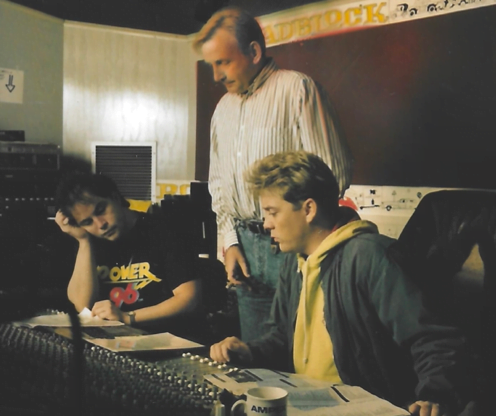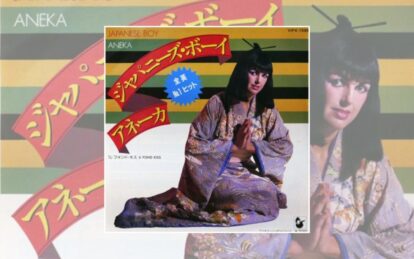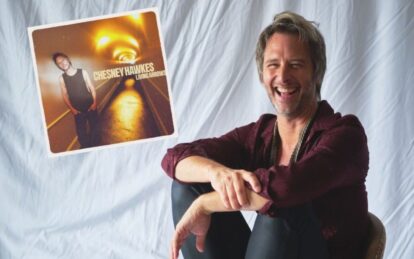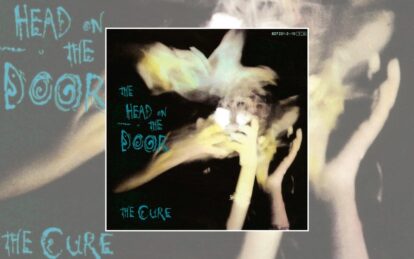Classic Pop meets Mike Stock and Matt Aitken, the creative heart behind the SAW partnership, to chart their meteoric rise from humble pub rockers to transatlantic hit makers… By Felix Rowe
When you get really moved by a simple, cheap pop song,” says Mike Stock with a chuckle, “you question: ‘What the hell… how’s it managed to do that?’” Ostensibly, he’s talking about a lifelong fascination with pop music that began with Elvis and Buddy Holly. But really, it’s a playful reference to his own considerable output as one third of Stock Aitken Waterman.
‘Simple, cheap pop song’ is a taunt that the phenomenally successful production team will be all too familiar with. Yet the key to doing anything well is to make it look simple, even when it’s anything but.
“And then you realise there’s a lot more to it than would seem on the surface,” Mike continues, “the way of structuring songs, pulling out the emotions, organising the music and the lyric to coincide. The whole thing comes together in an incredible confection. That’s what a great pop song is to me.”
SAW’s track record is truly unprecedented: over 100 Top 40 hits, including 18 No.1s, three of them in the States. They’ve entered The Guinness Book Of Records for topping the charts with 11 different artists – and very few people can lay claim to being knocked off the top spot by their own record, a remarkable feat they managed in 1987.
Matt and Mike spent much of the 70s as gigging musicians, independently doing the circuit in pubs, clubs, hotels and, in Matt’s case, cruise ships. Their paths eventually crossed, and the perfectionist guitarist Matt impressed Mike enough to be offered a place in his band. Mike recalls the typical routine, playing crowd-pleasers at The Dorchester for £500 one night, followed by original material in the pub round corner under a different name for £60 the next.
But, as Mike concedes, “it’s a young man’s game going out on the road” and once he’d found himself on the wrong side of 30, still without a deal, it was time to take action. “I just made the choice, get rid of the safety net, go into the studio and record some ideas,” he explains.
“I became seduced by the notion of making records,” says Matt, who joined Mike in the studio. “It struck me as being a much more creative way to spend your time. We’d write a song, invent a name for the group and send our cassettes off to the record company in that there London. ‘Hi, we’re Fred Blogs and his Shoelaces, here’s our new record… what do you think?’”
The pair knew they were onto something good; they just needed a way in. “I don’t understand why I felt this way,” Mike tells us, “but I had an absolute conviction in my own ability to write hit songs. I just believed I could do it.
“When Matt and I got in the studio and the first stuff we were doing was starting to sound promising, I thought all we actually needed was a business manager to get us into the right area.”
“Either we were crap,” adds Matt, “which we didn’t think for a minute, or people weren’t listening to what we were doing. We heard these horrific tales of a skip outside the window of EMI Records, full of cassettes! So, after not getting replies from various record companies, we made damn sure on the next thing and made appointments ourselves. While we were in town, we went to see this guy, Waterman, that Mike had had a brief involvement with sometime earlier.”
Read more: The stories behind Stock Aitken Waterman
Read more: Whatever Happened To The Reynolds Girls?
As luck would have it, Pete Waterman – who had already enjoyed success with the producer Peter Collins – happened to be looking for a new team to manage. “I think we just went to see if Pete could point us in the right direction with our ideas, really,” says Matt. “We didn’t expect much more from that initial meeting. But he decided, I think, to take a chance on us.
“Pete had the keys to the record business because he’d been in it for a while. We were on the outside, but we had the creative side. Peter had the business side and the contacts. It dove-tailed very well.”
Mike and Matt would typically be left to their own devices in the studio. “I said to Pete at the very beginning, ‘Whatever you do, just keep bringing the work in,’ says Mike. “So, we did have lots of irons in the fire. We were sparking, and Pete introduced us to that world. Up until then, Matt and I worked in a very budget way, but certainly we could play in a bigger league.”
Mike recognises another invaluable quality in his new partner: “Pete is not a musician, he doesn’t play an instrument, but what he does have is a great love of pop music, and a way of looking at creating an edge – doing something in a way that’s going to create some attention. The first thing we did we had a minor hit, the second thing we’re in the charts, and the third thing we’re Top 5. Then a little bit later on we were No.1.”
“The first dozen or so things were really quite varied,” says Matt, “and we just took each production as it came as a challenge and a chance to try and improve and get better, I suppose. But it was soon clear that there was something right in the chemistry.”
Mike remembers: “Matt and I took our idea to him for a girl band to rival Frankie Goes to Hollywood, and he cottoned onto it immediately.” The resulting dance track was The Upstroke, released under the moniker Agents Aren’t Aeroplanes, a phrase Mike lifted from The Spy Who Came In From the Cold, chosen for sounding “a bit ridiculous”. They followed this with You Think You’re A Man by cult drag artist Divine.
“That caused a bit of a storm,” remembers Mike, “but it’s a way of announcing yourself. If you do something outrageous, everyone’s gonna take notice. Whether they like it or not is another matter – a lot of people were horrified! It was kitsch, it had all the ingredients of the sort of thing your mother wouldn’t like, but everything that you would like… because your mother didn’t!”
While SAW’s output was more diverse than they were sometimes given credit for, they gained recognition for taking the ‘Hi-NRG’ sound of the clubs into the pop mainstream.
“It was an honest way to build up a following, because in the clubs you can’t hype a record,” Mike points out. “People either dance to it and love it, or they sit around and the DJ gets sacked. It’s immediate feedback, a way of getting a direct link to what the public were liking. But most records at the time were very poor, throwaway stuff. We thought we could do something perhaps with a bit more quality to it – sonic quality.”
“I think we’d seen which way the compass needle ought to point by ’84,” Matt reflects. “It was just a matter of manoeuvring ourselves into a position where we could pick who we were working with and what song we were going to write for them. The style was dictated as much as anything by the fact that it was being successful.
“You know, if you’d come to us as that point and said, ‘We want you to work with Luther Vandross and here’s a million pounds to go to LA and do it’, we would have turned our hands to that sort of music quite successfully, I’m fairly sure. All three of us were quite broad-based in our music appreciations, we didn’t necessarily have to do that kind of Euro-based pop, but it was being very successful for us.”
They hit their stride with a string of profile-raising releases, each helping to propel the next forwards in a domino effect: Hazell Dean, Dead Or Alive, Bananarama, then later Kylie, Jason and their homegrown talent, Rick Astley. Their propensity for producing the goods earned them the nickname ‘the Hit Factory’ plus frequent Motown comparisons – but they didn’t always know they had a hit on their hands.
Read more: The Stock Aitken Waterman story
Read more: Making Rick Astley’s Whenever You Need Somebody
“We actually have a very bad track record on that!” laughs Matt. “The songs that were most successful were the ones at lot of the time that we had the least expectations of. We had no great expectations for Never Gonna Give You Up or I Should Be So Lucky. We all desperately wanted Respectable to be a hit, and I think we probably knew we had something with Venus.”
Mike agrees. “Never Gonna Give You Up was written in an afternoon, but we dithered for about six months because it was Rick’s first song and we weren’t sure what kind of a record we wanted to make. We took it through a few changes in terms of styling, put it aside, came back to it, worked with Kylie, came back to it. And we didn’t realise what a smash we had in our hands!”
A phenomenal success at the time, Rick’s transatlantic chart-topper has gone on to enjoy a second lease of life. “It’s the song that keeps on giving! A new generation seems to keep finding it. You can’t turn your back on Rick’s voice. My only question was, how do you promote him? Because he’s not a dancing ‘popette’ as you might say, or the check-out girls from Tesco’s Bananarama-type of thing, or the glamour of Pete Burns… you know, what is Rick? But in the end, it didn’t matter. It’s his voice and that song.”
SAW essentially owned the latter half of the 80s and, inevitably, such ubiquity invited detractors. Their trademark sound and great prolificacy were used by some quarters as weapons against them.
“Once you’ve started making things that people want to buy, you’d be a bit daft to change it too much,” says Matt. “Once Henry Ford had made the Model T, he didn’t discontinue it and bring out the Model U, did he? There was criticism later on that everything sounded the same, but we always did point specifically to Motown and Phil Spector, because you could always tell those records within four bars.”
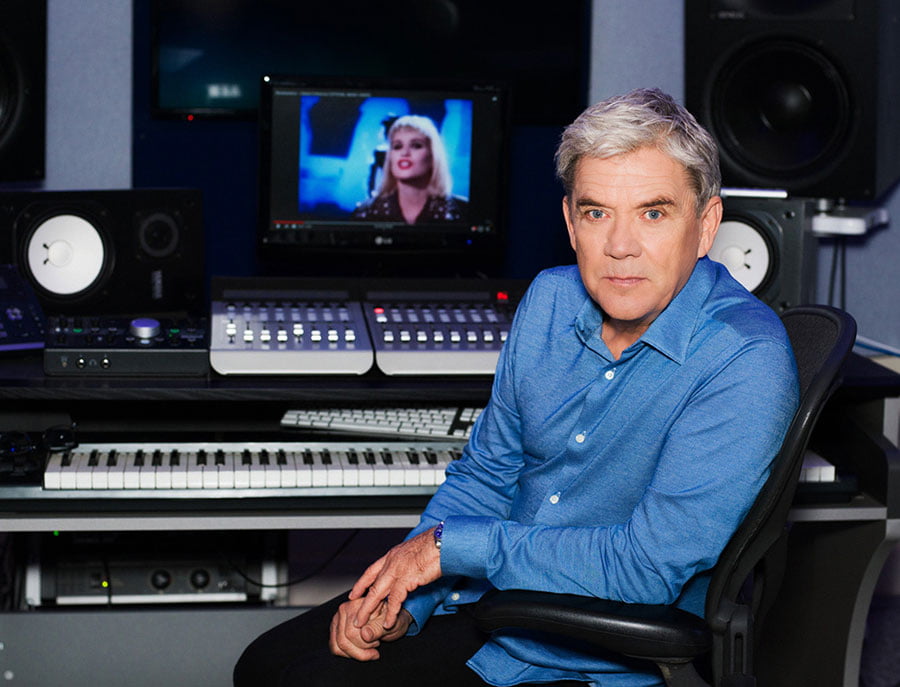
Mike Stock
By the late 80s, they were in great demand – the go-to team to launch or revive careers. But maintaining their own high standards when pushing out such quantity would be a challenge to anyone.
“To be honest,” Mike concedes, “there were times when we weren’t able to keep the quality up, because of the pressure of delivering. Suddenly, we became so bloody successful that everybody wanted a record off us. And, on occasions, the artists that we were being asked to work with weren’t quite good enough.
“I say this with my hands up, we’re guilty of it, you know, we sometimes didn’t give them the love that they really should have had. But that was part of the pressure of the work. You can’t do everything, and you can’t please everybody 100% of the time.
“We started, unfortunately, to parody ourselves to a certain extent,” he continues. “We became a little bit like pop stars ourselves, our names sometimes in bigger letters than the artist, and that’s not something I was aiming to do.”
Perhaps the greatest flattery that can be bestowed upon any public figure, they were parodied several times, most notably as puppet masters ‘controlling’ Kylie on the satirical late-night show Spitting Image.
Read more: Top 40 Kylie tracks
Read more: Top 40 Stock Aitken Waterman songs
“Look, I suppose everybody who’s enjoyed some fame or notoriety understands there’s two sides to everything,” says Mike. “There’s always going to be a load of crap come your way, if you’re successful. There’s a lot of good stuff, there’s a lot of crap, and they’re in equal measure. It didn’t bother me and it didn’t stop us. The only things that got in the way were our fights, which is a shame.”
He’s referring to an eventual dispute with Waterman over the ownership of the recording master tapes, which ultimately led to a bitter legal battle and a fair amount of bad blood.
“Pete got to the point where he wasn’t sharing the credit properly any more,” says Mike. “It’s an unresolved debate, but I’m not fighting the battle anymore because I’ve moved on. The publishing is shared by the three of us equally, but the ownership of the master recordings, because Pete ran around and stuck his name on everything, ‘PWL’ – well, that was him operating as a businessman. While Matt and I were doing what we were doing in the studio, he was creating for himself what turned out to be an issue.
“But by the time Matt and I raised our heads out of our keyboards in about 1991 or ‘92, Pete had already gone down a road and signed things off, and was selling the master catalogue recordings to Warners. Suddenly now, we’re not fighting Pete Waterman, our erstwhile partner, we’re in a battle with Warners… AOL Time Warner, a major American corporation! So that wasn’t nice and was wrong, but we had to pull out of that battle because we didn’t have the money to battle it.
“But the truth is always the truth, you know. We made those songs together, with our own money and our own machinery that we’d purchased by the success we were having. But through all of that – and I’m saying this like you think I’m an idiot – I always liked Pete. Pete’s a good bloke. I would never fall out with him personally, but on a business level we did.”
But Mike did once refer to Pete as a ‘buffoon’. “Did I?” he laughs sheepishly. “No, I have a good relationship with Pete. It’s too long ago to worry about it. But at the time, in the white-hot cauldron of creativity… don’t forget, we all had teams of lawyers and publishers and all sorts of people screaming around our heads.”
“The three of us were not what you’d call natural bedfellows,” offers Matt, “although Mike and I had to get on because we were stuck in a box together for 60 hours a week, and we did that via humour and banter. But we would coalesce at the end of the day with Pete and go for a couple of beers, so we had a social aspect as well. We get on fine when we get together, but we don’t necessarily go out of our way to do that because, as Mike once said, he’s spent more time with me than he has with his wife!”
Besides obvious talent and hard work, a considerable degree of pragmatism seems to have been integral to SAW’s success, a coalition grounded in mutual benefit: self-belief tempered by a recognition of limitations; a genuine love for the craft but a willingness to follow the tide. Mike’s opening analogy of the perfect pop song applies to the partnership itself: each individual component coming together to create an ‘incredible confection’ greater than the some of its parts.
The ‘Hit Factory’ epithet captures a sense of productivity and success, but the associated notion of churning out indiscriminately belies the level of refinement that went into honing the finished product.
“We always thrashed ourselves to bits on all songs,” says Mike. “We drove ourselves mad going through all the avenues, all the possibilities to find the one that clicks. Sometimes, when you listen to a song, the end result doesn’t appear that way, but the simplicity of it is studied. It’s not accidental.”
And for all that’s made of SAW’s trademark sound, they threw in a few curveballs too – their unreleased recordings with heavy metal legends, Judas Priest, the most curiously enticing example.
“Sometimes you hear the odd track you haven’t heard for a long time and you think, ‘Bloody hell, that’s awful! How did we ever let that out?’” laughs Matt. “And sometimes something catches you unaware and you think, ‘Bloody hell, wasn’t that great?’ You know, they can’t all be Rolls-Royces when you’re working at that intensity. But under the circumstances, I think that the standard of what we did was phenomenal. I don’t think anyone will ever get close to that again.”
Top 15 SAW albums
Check out SAW’s website
Classic Pop may earn commission from the links on this page, but we only feature products we think you will enjoy.

